Margraviate of Brandenburg
Videos
Page
The Margraviate of Brandenburg was a major principality of the Holy Roman Empire from 1157 to 1806 that played a pivotal role in the history of Germany and Central Europe.
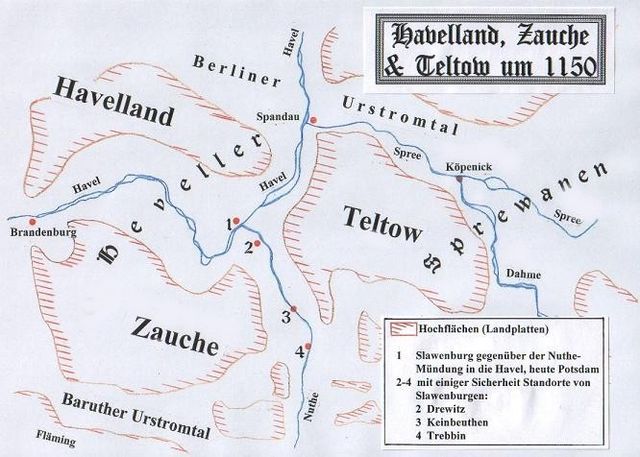
Slavic territories pre-Brandenburg, c. 1150
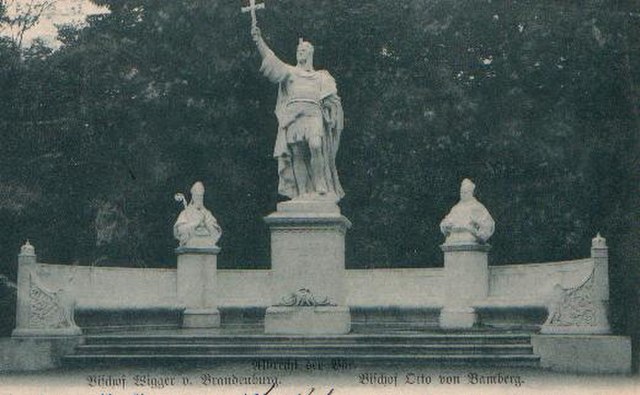
Siegesallee statue of Albert the Bear, flanked by Bishop Wigger of Brandenburg and Bishop Otto of Bamberg
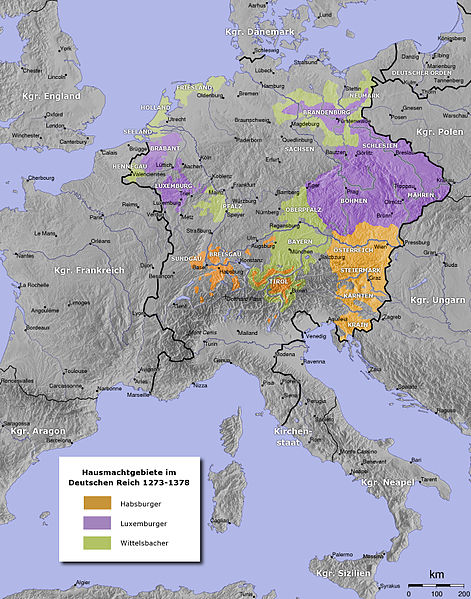
The Holy Roman Empire from 1273 to 1378: Habsburg lands Luxembourg lands Wittelsbach lands
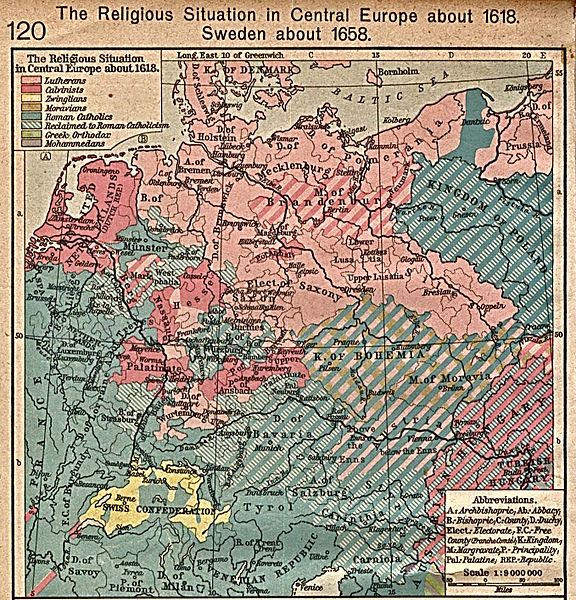
Religion in Central Europe, c. 1618. Electoral Brandenburg is striped, indicating that its ruler was a Calvinist, while most of his subjects remained Lutheran. Lutherans Calvinists Zwinglians Hussites/Bohemian Brethren Roman Catholics Greek Orthodox Muslims
Prince-elector
Videos
Page
The prince-electors, pl. Kurfürsten, Czech: Kurfiřt, Latin: Princeps Elector) were the members of the electoral college that elected the ruler of the Holy Roman Empire.

The imperial prince-electors Left to right: Archbishop of Cologne, Archbishop of Mainz, Archbishop of Trier, Count Palatine, Duke of Saxony, Margrave of Brandenburg and King of Bohemia (Codex Balduini Trevirorum, c. 1340)
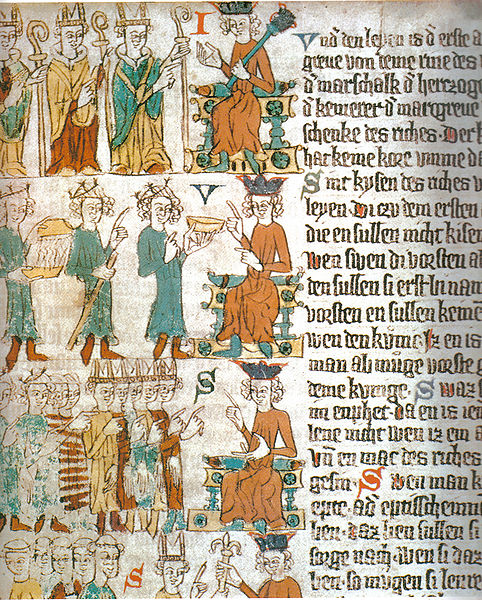
Choosing the king. Above: the three ecclesiastical princes choosing the king, pointing at him. Middle: the Count Palatine of the Rhine hands over a golden bowl, acting as a servant. Behind him, the Duke of Saxony with his marshal's staff and the Margrave of Brandenburg bringing a bowl of warm water, as a valet. Below, the new king in front of the great men of the empire (Heidelberg Sachsenspiegel, around 1300).
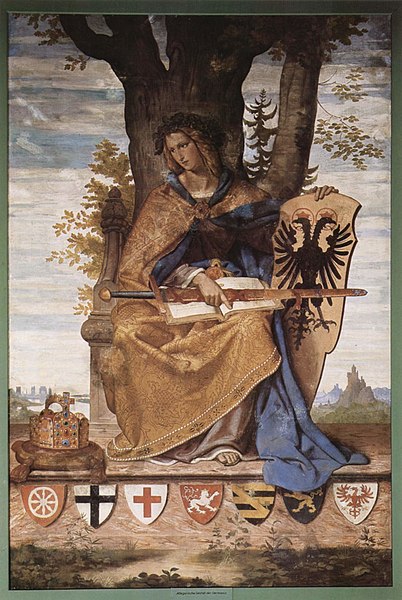
Coats of arms representing the seven original electors with the figure of Germania. Original colours were vivid. Germania's gown was gold, not beige, and the blue-grey was purple. Also, the browns were painted as vivid red and the muted grey in Saxony's arms was a brilliant green.
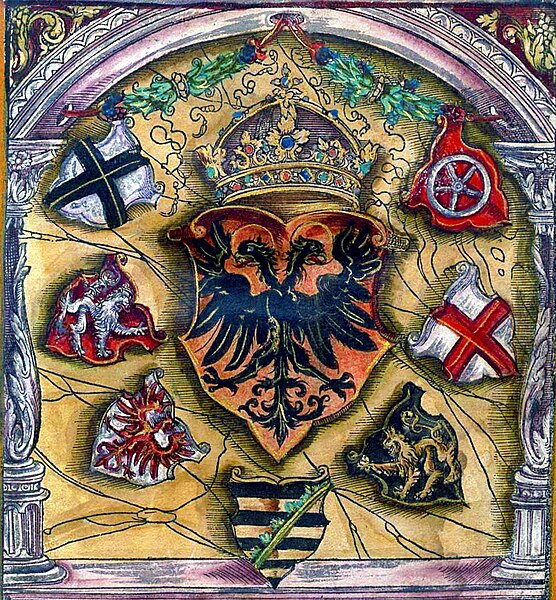
Coats of arms of prince electors surround the Holy Roman Emperor's; from flags book of Jacob Köbel (163#+1545). Left to right: Cologne, Bohemia, Brandenburg, Saxony, the Palatinate, Trier, Mainz